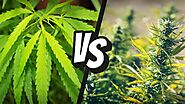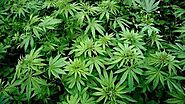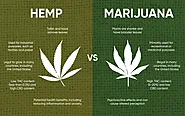-
About
- About Listly
- Community & Support
- Howto
- Chrome Extension
- Bookmarklet
- WordPress Plugin
- Listly Premium
- Privacy
- Terms
- DMCA Copyright
- © 2010-2025 Boomy Labs

 ESCAPE FLOWER
ESCAPE FLOWER
Listly by ESCAPE FLOWER
Marijuana and hemp come from the same cannabis plant species but have key differences in THC content, legal status, usage, and cultivation. Marijuana is grown for its psychoactive effects and medical benefits, while hemp is primarily used for industrial and commercial purposes, including textiles, biofuels, and CBD products. Their distinct growth conditions, appearance, and regulatory oversight further set them apart.

The primary difference between marijuana and hemp lies in their THC (tetrahydrocannabinol) content. Marijuana typically contains anywhere from 5% to over 30% THC, which is responsible for its psychoactive effects. In contrast, hemp contains only 0.3% THC or less, making it non-intoxicating and unsuitable for recreational use.

Due to its high THC levels, marijuana is classified as a controlled substance in many countries, with strict regulations governing its sale and use. Hemp, on the other hand, was federally legalized in the U.S. under the 2018 Farm Bill, as long as its THC content does not exceed 0.3%. However, some restrictions on hemp-derived products still exist in certain regions.

Marijuana is primarily grown and consumed for medical and recreational purposes. It is used for pain relief, anxiety management, and other therapeutic benefits, as well as for its euphoric effects. Hemp, however, has a wide range of industrial applications, including textiles, biofuels, biodegradable plastics, construction materials, cosmetics, food products, and CBD supplements.
Cannabidiol (CBD) is a non-psychoactive compound found in both marijuana and hemp, but hemp generally has a much higher concentration of CBD. This makes hemp the preferred source for CBD products, such as oils, tinctures, and topicals, which are used for wellness and therapeutic purposes without causing a high. Marijuana, while containing CBD, typically has a lower CBD-to-THC ratio.
Hemp is a hardy crop that grows quickly in various climates and requires minimal maintenance. It can be planted in dense fields with little space between plants. Marijuana, however, is more delicate and requires carefully controlled environments, including specific lighting, humidity, and temperature conditions to maximize its THC production and overall potency.
The physical characteristics of hemp and marijuana differ significantly. Hemp plants are tall, thin, and can grow up to 15 feet high, with long, narrow leaves. Marijuana plants, in contrast, are shorter and bushier, with broader leaves and dense flower buds rich in THC. These visual differences help distinguish the two plants in agricultural and regulatory settings.
Hemp has a short growth cycle of approximately 3–4 months, making it an efficient and sustainable crop for large-scale farming. Its fibers, seeds, and flowers can be harvested for various purposes. Marijuana, on the other hand, has a longer and more labor-intensive growing process, requiring careful attention to its flowering cycles, which can take several months to reach optimal THC levels.
Hemp has been used for centuries in the production of textiles, ropes, paper, biodegradable plastics, construction materials like hempcrete, and even biofuels. Its seeds are a rich source of protein and omega fatty acids. Marijuana, however, has limited commercial applications outside of the medical and recreational cannabis industries due to its psychoactive effects and regulatory restrictions.
Marijuana’s high THC content makes it intoxicating, leading to euphoria, relaxation, altered perception, and in some cases, heightened anxiety or paranoia. This is why marijuana is often associated with recreational and medicinal use. Hemp products, on the other hand, does not produce these psychoactive effects, as its low THC levels are insufficient to cause a high.
Marijuana cultivation, distribution, and sales are subject to strict regulations, requiring licenses and compliance with specific laws regarding production and sale. In contrast, hemp farming is more widely permitted under agricultural regulations, but hemp-derived products, such as CBD oils and extracts, may still be subject to legal restrictions in certain regions, depending on their intended use and THC content.
